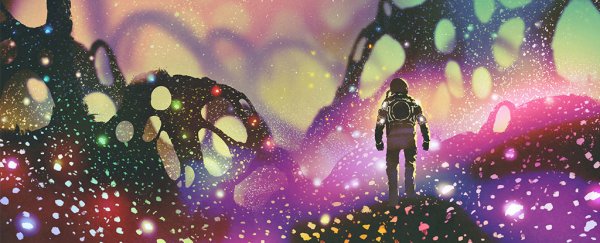Astrobiology has advanced in leaps and bounds over the past few years, which means NASA really should think about revisiting its strategy on alien hunting.
This advice comes courtesy of the US National Academies of Sciences, Engineering, and Medicine, who under the direction of Congress issued a report calling the space agency to update its agenda on searching for life among the stars.
"Astrobiology is a field of rapid change," the report begins.
"In the three years since publication of NASA's Astrobiology Strategy 2015, significant scientific, technological, and programmatic advances in the quest for life beyond Earth have taken place."
This isn't to say NASA hasn't already been taking this 'quest' seriously.
The Kepler mission has had a good run in its search for exoplanets, with a keen desire to pick out any which might offer promise of life.
Mars has been scoured for signs of biochemistry, resulting in exciting signs of complex organic chemistry.
And Europa is still in our sights as a potential extra-terrestrial ecosystem.
But a great deal of this work still amounts to blind groping based on what we know about the evolution of life on Earth; itself a field that has progressed quickly in recent years, but only a solitary example of what life might look like.
For all we do know about our own biosphere, there's still plenty of room for debate, raising the possibility that we might be missing something important as we scan light signatures for clues on habitability of distant worlds.
Given the promising start to NASA's Transiting Exoplanet Survey Satellite, and Kepler's treasure trove of thousands of extrasolar planets, astrobiologists will have their work cut out for them in coming years.
The report argues NASA needs to broaden its boundaries on what constitutes evidence of life to avoid prematurely casting any such planets with unusual life forms into the sterile pile.
Nobody is sure what these "agnostic" signs of life-like activity might look like, which is more or less the point. NASA's guidelines, according to the report, currently don't take this into account.
Habitability, state the experts, is not a yes or no question. Life emerges not as a sudden event but a dynamic phenomenon. What seems like a nice place for us to live is not the same thing as a potential cradle for new life.
One recommendation the report makes is for NASA and other relevant agencies to adopt more of a systems-level approach to thinking about the dynamics behind habitability, "with a focus on problems and not disciplines".
Such a problem is how to look for life that isn't stinking up a planet's surface, waving a welcome flag. As appealing as our own planet's ground level happens to be, there are plenty of examples of life gradually evolving deep underfoot.
Just how we go about spotting 'slow' life – especially when it's obscured by thick layers of rock – is going to be one major challenge.
Even if we're capable of setting down on distant worlds, we need to give better thought to how we might identify novel biochemical signatures using robot technology. Or even plant down humans without risking contamination.
None of these problems are new. The solutions aren't elusive either – every year we're discovering better materials for space exploration, pulling more details from the 'fingerprints' of light from far off planets, and discovering more about the chemistry of life.
Rather, the report's panel of researchers is calling for a rethink on how we bring this growing pool of knowledge together to find needles in a haystack, especially considering we're still learning what those 'needles' might look like.
A small team of astronomers from Pennsylvania State University recently tried to put some parameters around this veritable box of needles, coming up with eight distinct fields we would need to rifle through for any hints of life.
If you wanted to find a cat in your bedroom, you'd need to have enough light in the visible spectrum, and then look up and down, left and right, back and forth.
Aliens would be similar. We'd need to look for repetitive patterns in the three dimensions of space, taking into account the frequencies of light signals, across multiple sensitivities, modulations, polarisations, and transmission bandwidths.
The numbers are mindboggling, and the temptation to whittle it down to something manageable is overwhelming.
Space is big. And life is complicated. But the reward of discovering we're not alone would be out of this world.
The report can be downloaded from the National Academies of Science, Engineering, and Medicine.
